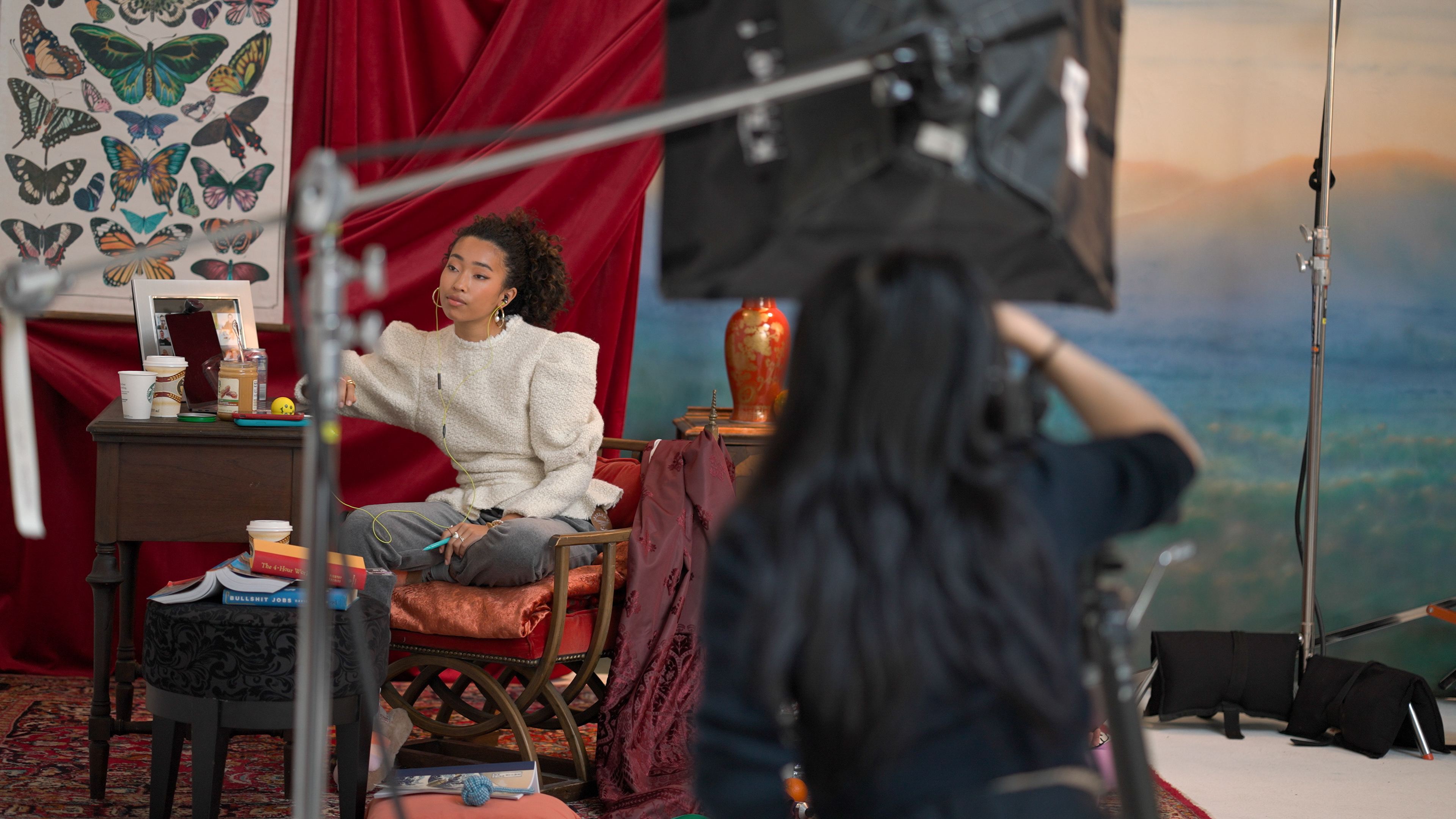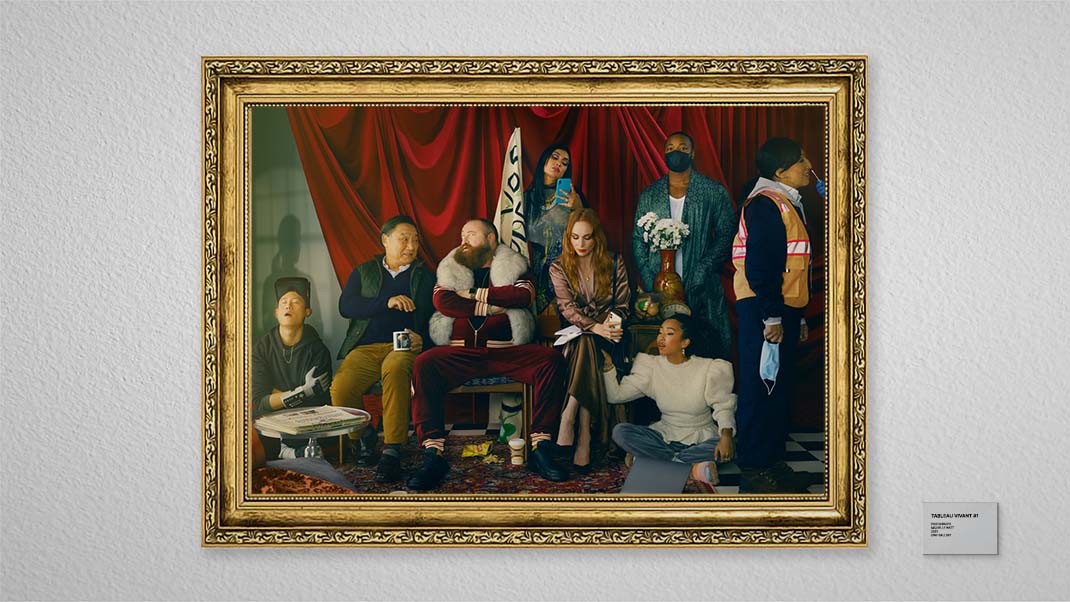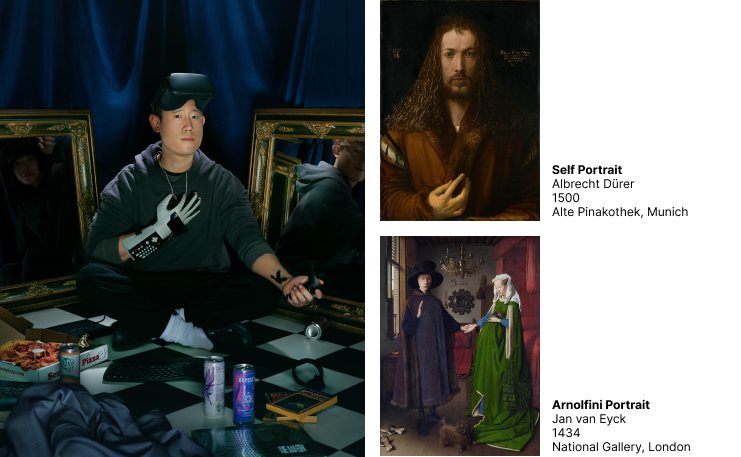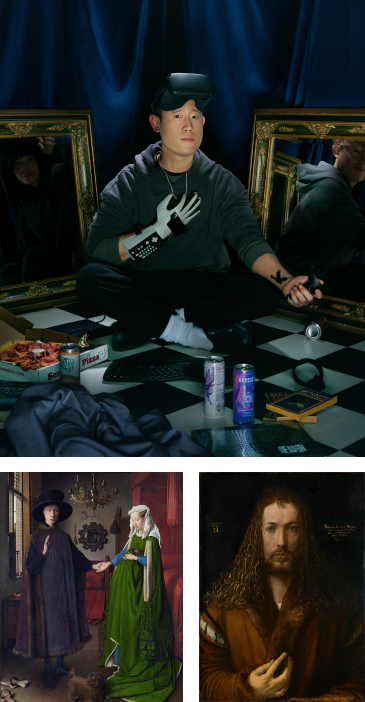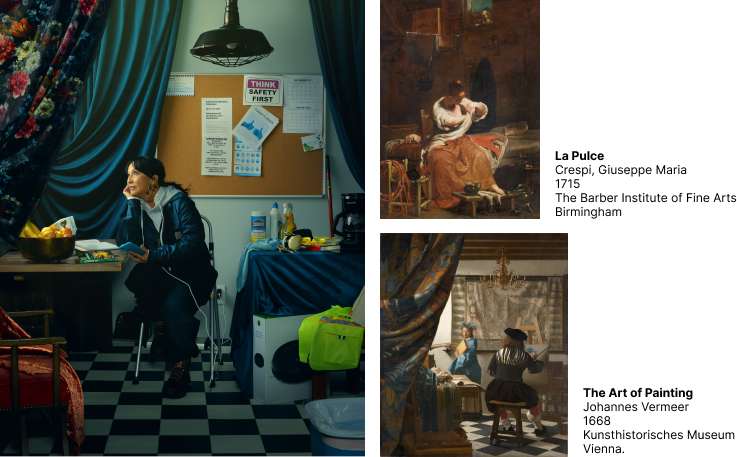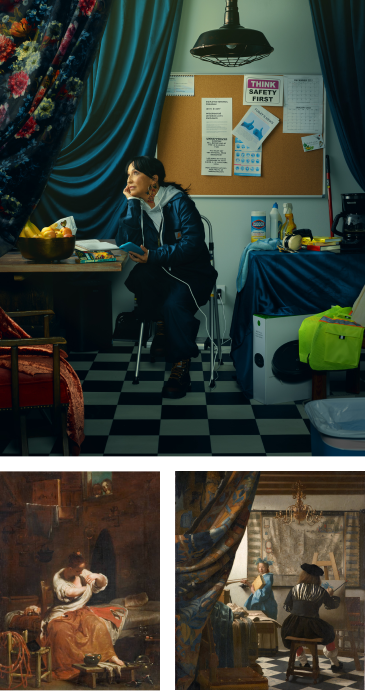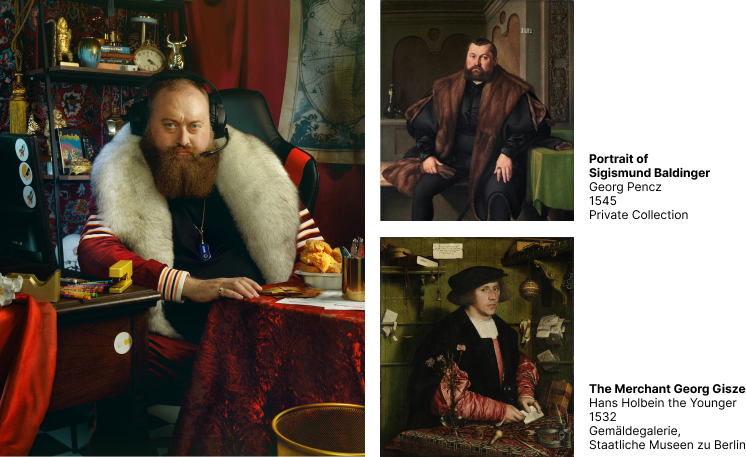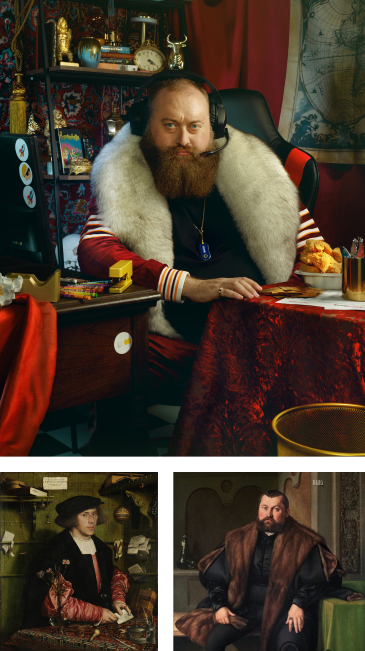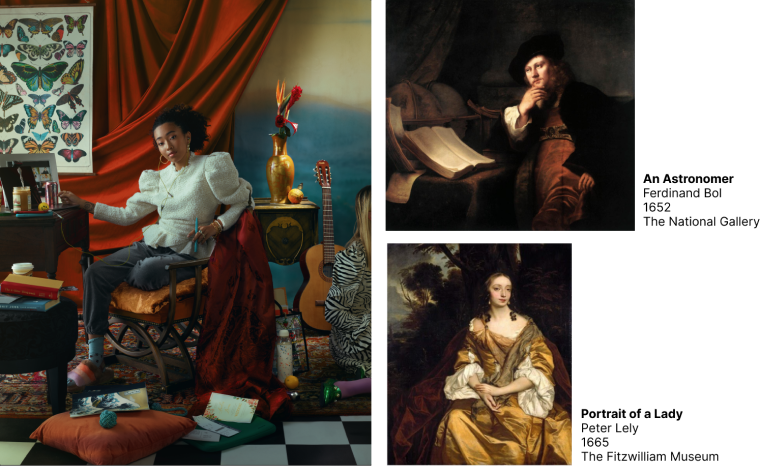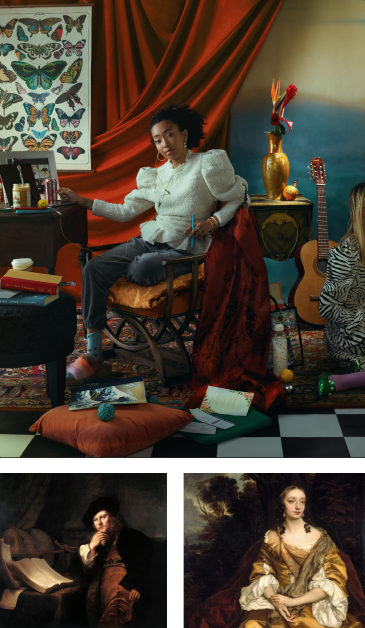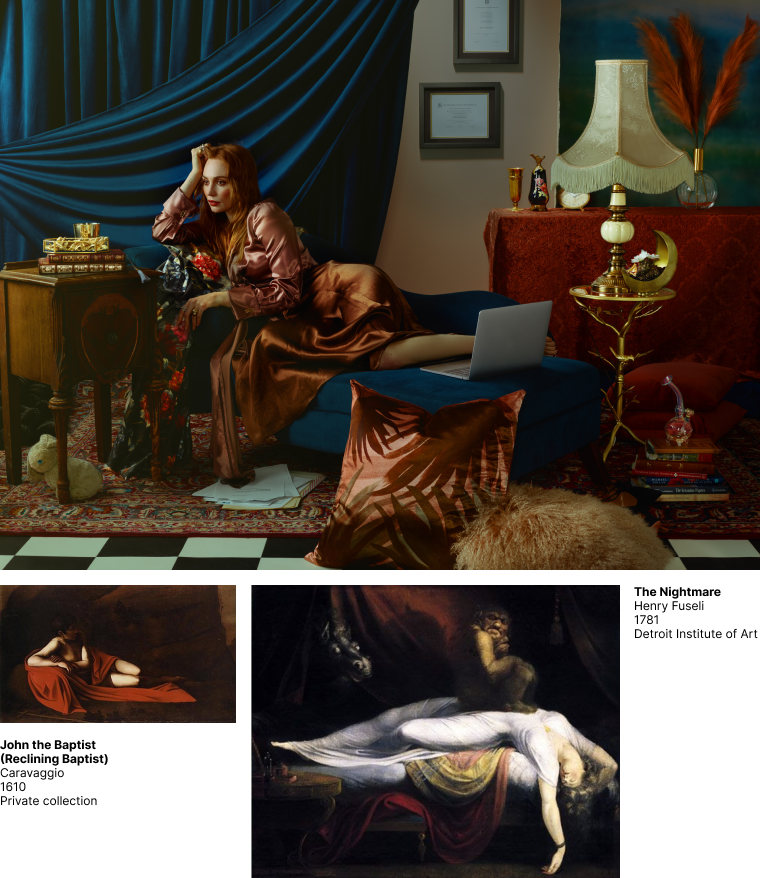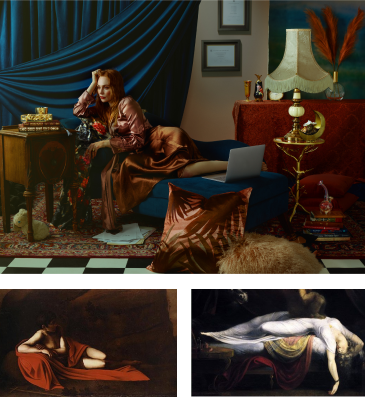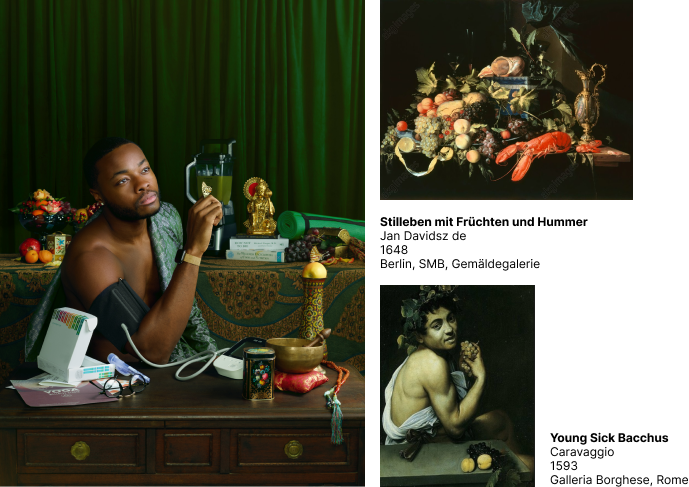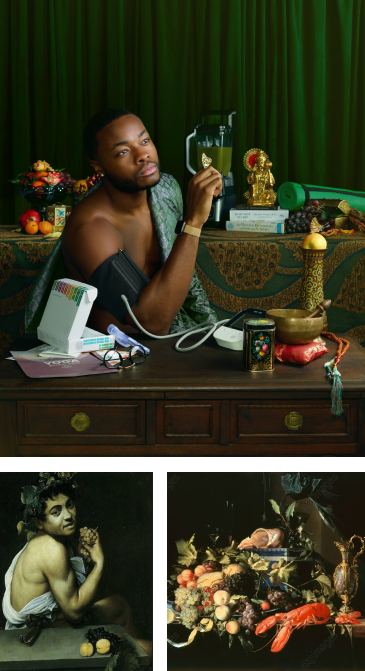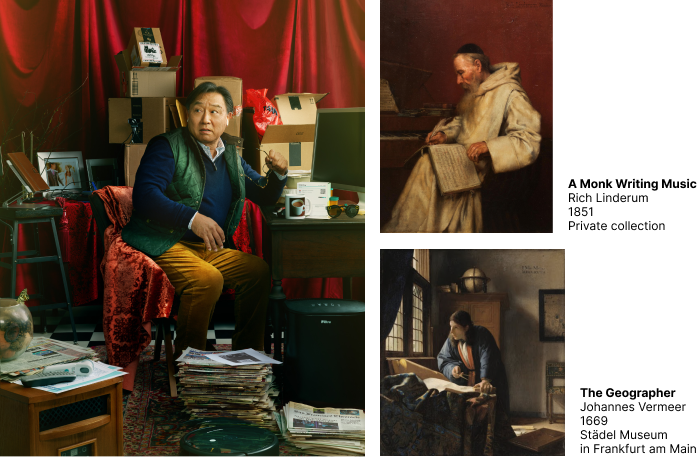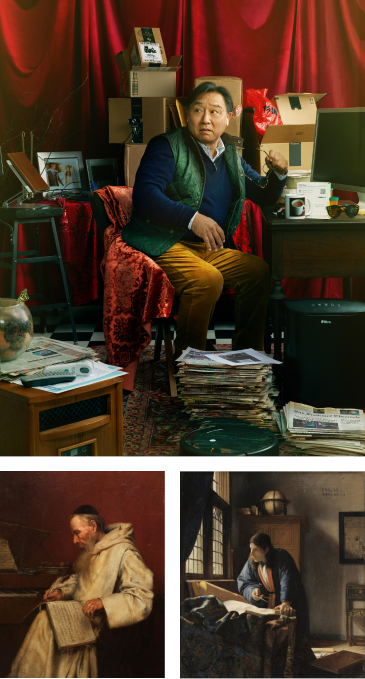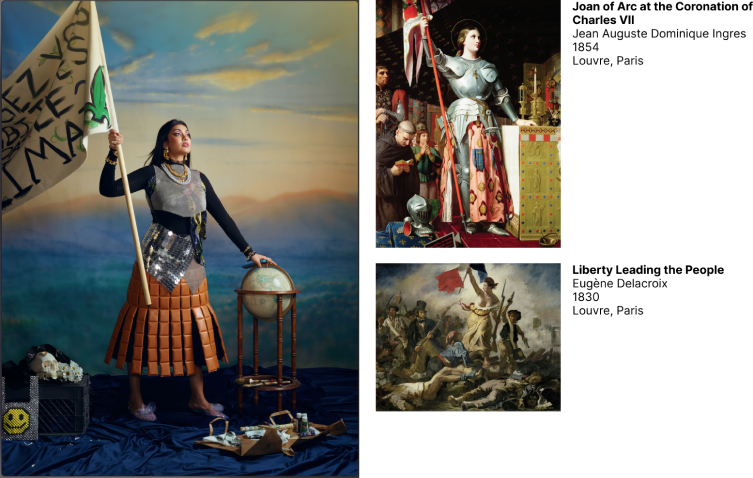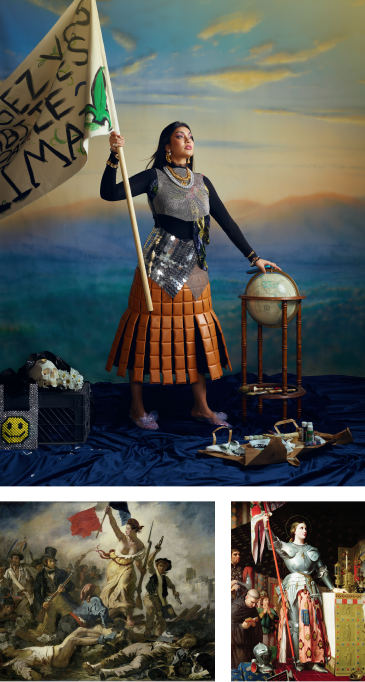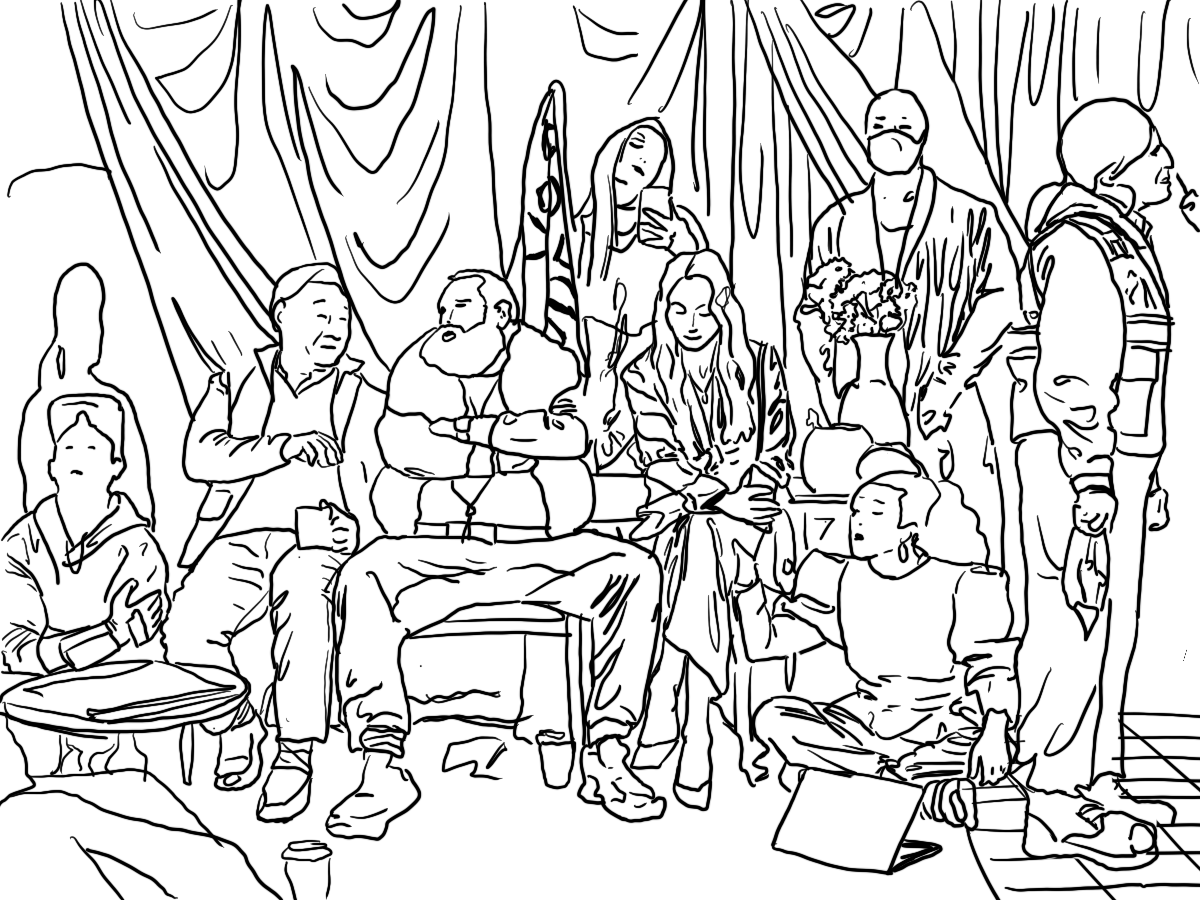How do you illustrate findings from more than 100,000 human voices and the emergence of eight personas from a pandemic? By turning to the artists who illustrated an earlier Renaissance and a photographer who could apply modern style and sensibilities.
We found inspiration in the “accidental Renaissance,” a social media trend that uses photographs that resemble paintings from Vermeer to Rembrandt, and in Michelle Watt, a Hong Kong-born photographer who captures the complexity of these new individuals with creativity, compassion, and whimsy.
Watt’s portraits and fashion photography often include embedded hidden details as social commentary. Her editorial work has appeared in TIME, The New Yorker, Vogue Arabia, Allure, PAPER, and Blanc Magazine.
The Artist
Watt is a Hong Kong-born photographer currently based in Brooklyn, NY. She specializes in staging conceptual narratives with a whimsical flair, often addressing themes of freedom and restriction within a cultural identity.
Her portrait and fashion work engender rich narratives, telling real stories with surreal application to give life to unique standards of beauty and culture, including those informed by her Chinese-American background. She finds joy in assembling tiny, discrete pieces to create vast, meaningful worlds, embedding hidden “Easter eggs” as varying social commentary throughout her work. Her photographs have been published in The New York Times, USA Today, and Blanc Magazine.
Her unique aesthetic folded the baroque vision into a subvertly modern diorama. Michelle's passion for "tableau vivant," French for "living picture" and an art form defined by carefully posed actors, props, and scenery, was vital in presenting rich allegorical imagery. Together with this approach, we developed a more personal and innovative artistic language.
Creative Direction
We created eight portraits and one tableau, representing the archetypal personas identified and their shadow of disinformation. We encourage viewers to focus on the details in the pictures, as they would a historic painting. Using the visual language of Renaissance art, more specifically the Baroque era, the images are based on the research but also lore. Butterflies, for example, play a symbolic role; metamorphosis caused by the pandemic reflects new behaviors and habits.
We are aware of this as a potential bias in Western art; however, our ambition is to be aspirational and make unique work that incites discussion, contemplation, and can be seen as a forward-looking reimagining crafted by many voices.
Who are these new people? They are you and me, your customers, employees, and colleagues. They are Gen Z workers starting their careers and baby boomers embracing technology. They are the New Thinkers, Dreamers, and Doers Shaping Our Future.
The Shoot
Planned before a spike in COVID-19 cases, a talented crew came together in San Francisco of wardrobe, set, prop, hair, and makeup artists. Over two days, 26 people built and transported sets to paint the portraits and were subject to rapid tests and masks while aided by air filters and humidifiers, serving as a case study in contingency planning in the era of COVID-19. A scrappy work ethic and can-do attitude were a highlight of making something we can be proud of.
Inclusion and Diversity
Our mission is to use our platform to celebrate humanity’s myriad differences. We rely on a data-driven approach to understand the world, but we also know that data alone will never be sufficient. It's the starting point from which we imagine a more diverse, equitable, and inclusive future.
Cross-legged in an austere room, sits a Metazen. In their lap is a keyboard; on their head, VR goggles pushed up. They stare directly at the viewer as if we, the audience, are on a screen. The pose feels like a diplomatic greeting from another world. A hooded sweater flows around them. A plate with some simple foods sits to their right, the science-fiction novel "Snow Crash" peeks out.
Light spills into a breakroom where we see the New Collar sitting on a stool in a collared jumpsuit. On a bulletin board is a variety of printouts: one about a bonus for referrals, one about schedules and overtime, and another about COVID-19 mandates. The New Collar looks out a window. In their hand, a tutorial plays on a phone which is plugged into the wall. Lunch from home sits on a small table, a science-fiction paperback rests beside it. A large bowl with lonely fruit takes up space. An employee of the month printout has fallen from the bulletin board. The New collar is posed to give the sense that they are about to stand up and leave. We see a box for a new robot vacuum under a table. The scene is cast below a light that does not work.
Light from a monitor illuminates a Hivemind Investor in their bedroom. They sit in an elaborate computer chair. A smirk in the eyes they face forward, head tilted, and attention turned towards the side to glimpse their monitors. Large video game headphones sit around their neck. The clothing is of luxury-leisure, featuring expensive and rare sneakers. Around their neck hangs a necklace that clasps a two-factor authentication key. In the wastebasket we see credit card bills, and on the desk is a meal of chicken tenders. Crayons are strewn around. On a cluttered shelf sits a gold gorilla near a clock that reads 4:20. On a small bookshelf is an assortment of items, one of which is a book on rockets, another one on lemmings.
The Virtual Native sits cross-legged in sweatpants, working from a laptop. Her hair is tidy and and she's fresh-faced for the workday. Surrounded by a perfectly aligned array of items that makes up an ideal remote working set-up. A stress toy rests beside two stacked mobile phones, one with headphones leading up to the ear of the Virtual Native. Multiple coffee cups clutter one side of the workspace. A loyalty card for the local coffee shop they work at regularly acts as a bookmark. Behind the Virtual Native is a curated background that lends to an air of professionalism. A framed Zoom screenshot of the graduating ceremony is in view. On the floor is a notebook full of interview dates, the cover of which is "The Great Wave off Kanagawa." On the floor beside the Virtual Native is an assortment of items spilling out of a bag, including old plane tickets, a mailed wedding invitation, printouts, and a guidebook for a foreign nation. The Virtual Native sits confidently in a thoughtful pose exposing expensive jewelry. We see a dog toy stuck under the wheel of the chair. In the background, we see another figure: a nearby friend. Co-working, not a co-worker.
What feels like the corner of a lush living room, laying back on a chaise lounge chair we see a Psychedelic Explorer. They are draped in loose, fashionable, and luxurious office wear. Propped up on one elbow, they lean and look forward at an end table. A butterfly lands on a flowering cactus. A plate with ornate mushrooms is in view. There is a nightstand with a glass of water, and a plush white rabbit rests against the chaise legs. Stacks of research papers sit under the chair and books with various bookmarks are scattered. Beside a painting on the wall, we see multiple framed degrees.
Robed in comfort, a green smoothie beside them, a Wellness Protagonist sits on a bench in what could be their foyer. Around their arm, a blood pressure pump takes calculations. Blue-light filtering glasses rest as they look at health stats. New mail spills around; an open box with a DNA vial for analysis, glossy folders for different health services below boxes with mail-order supplements. On one wrist is a fitness tracker. They are at peace.
A Digital Bloomer sits happily engaged with their tablet at a table. In another hand, a mug. On the mug is a photo of a more elaborate mug. In the background, a digital picture frame displays a wedding photo of a young couple. Multiple devices are plugged in and charging opposite the Bloomer. In the corner we see packages sit around them. The Bloomer's clothing is trendy and clean. Wireless earphones are seen in the ears. In the background, upon a pile of newspapers sits a smart speaker, behind that an old webcam. The Digital Bloomer has a relaxed pose. Within view, we see printouts of tickets for an event that are just screenshots from a phone. Beside car keys are a takeout container, a bag of prescription meds from a trendy online pharmacy, and some postcards.
The Climate Catalyst stands proud, head tilted upwards. A smirk of pride is on their face. Styled hair frames a face with professionally done makeup. Clutching a mobile phone they take a moment while resting on a globe. In their hand is a homemade flag of protest written in French. The clothes they wear look fashionable but almost patchwork, made of a luxury brand's upcycled line. A reusable shopping bag sits in the corner. By their feet sits the supplies for their home made protest banner.
